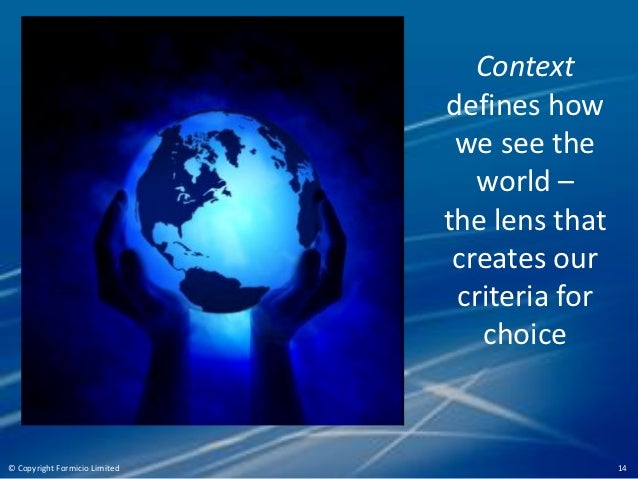
Finally, careful consideration must be given in presenting the resulting analytics in an unbiased way that helps us to make that informed decision.Many folks succumb to confirmation bias – the tendency to interpret new evidence as confirmation of one’s existing beliefs or theories – and only seek data that supports the decision that they have already made.Are you trying to gather data to determine the right decisions or are you gathering data to support the decision that you have already made? How one frames the decision becomes important in the data gathering part of making an informed decision. The Importance of Properly Framing the Decision to be Made Build analytic visuals and graphics that present the assessment in a format that enables the decision maker to make an informed decision. Identify ramifications and costs of decision model being wrong that is, what are the costs associated with making a wrong decision (sickness, death, embarrassment, a better world). This step doesn’t get nearly enough attention in the decision-making-process. Identify the direct and indirect costs and benefits of each cell of the MECE Decision Matrix. This is where a significant amount of time should be spent, especially if the decision has high consequence. This step is tricky in that the sources and credibility of the data and statistics must be objectively Research and gather data and statistics for each cell of the MECE Decision Matrix with an assessment of the data reliability. Research and Gather Data and Statistics.Construct the mutually exclusive and collectively exhaustive (MECE) Decision Matrix that maps actions to potential outcomes. Clearly state Decision Hypothesis that you wish to assessment, and KPIs against which Decision progress and success will be measured The starting point for decision making process is to create a hypothesis around which we are seeking to make a decision. Identify & Triage Decision to Be Made.Some steps in the Informed Decision-making Framework: To aid in making informed decisions in imperfect situations of incomplete, conflicting, and/or distorted data, we can embrace the Decision-making Framework of Figure 4.įigure 4 : Informed Decision-making Framework

To quote Nazi Propaganda Minister Joseph Goebbels “If you tell a lie big enough and keep repeating it, people will eventually come to believe it.” Sad, but true. And, unfortunately, some decisions are based upon the loudest, most repetitive voice in the room.



I call this “Decision Literacy.” Decision Literacy The exercise starts by reviewing a process for making informed decisions in imperfect situations.
MAKE INFORMED DECISIONS HOW TO
“ Nobody’s right if everybody’s wrong” – “ For What It’s Worth” by Buffalo Springfieldįor my class at Menlo College, I am creating an exercise where the students will explore how to make informed decisions in situations of imperfect or even conflicting data (using the decision about wearing seatbelts). We are seeing this situation play out in the real world with the COVID vaccination resistance (Figure 3).įigure 3 : COVID-19 Decision-making Extremes Preventive decisions can be particularly tricky, especially in highly emotional (politicalized) situations where the costs associated with being wrong are distorted. Examples of preventive decisions include: There is a whole class of decisions, preventive decisions, which are proactive actions taken to minimize the probability of serious injury or death. Unfortunately, every day we are asked to make important, sometimes life-or-death decisions with imperfect and/or conflicting data. Yes, Las Vegas has figured out how to monetize our stupid human decision-making (SHDM) flaws (Figure 1).įigure 1 : Data-driven by Dilbert (Scott Adams) And if you want proof, just visit Las Vegas. And that’s a big challenge because humans are inherently bad at making decisions. We live in a world where everyone needs to learn how to make informed decisions with incomplete and sometimes conflicting data.


 0 kommentar(er)
0 kommentar(er)
